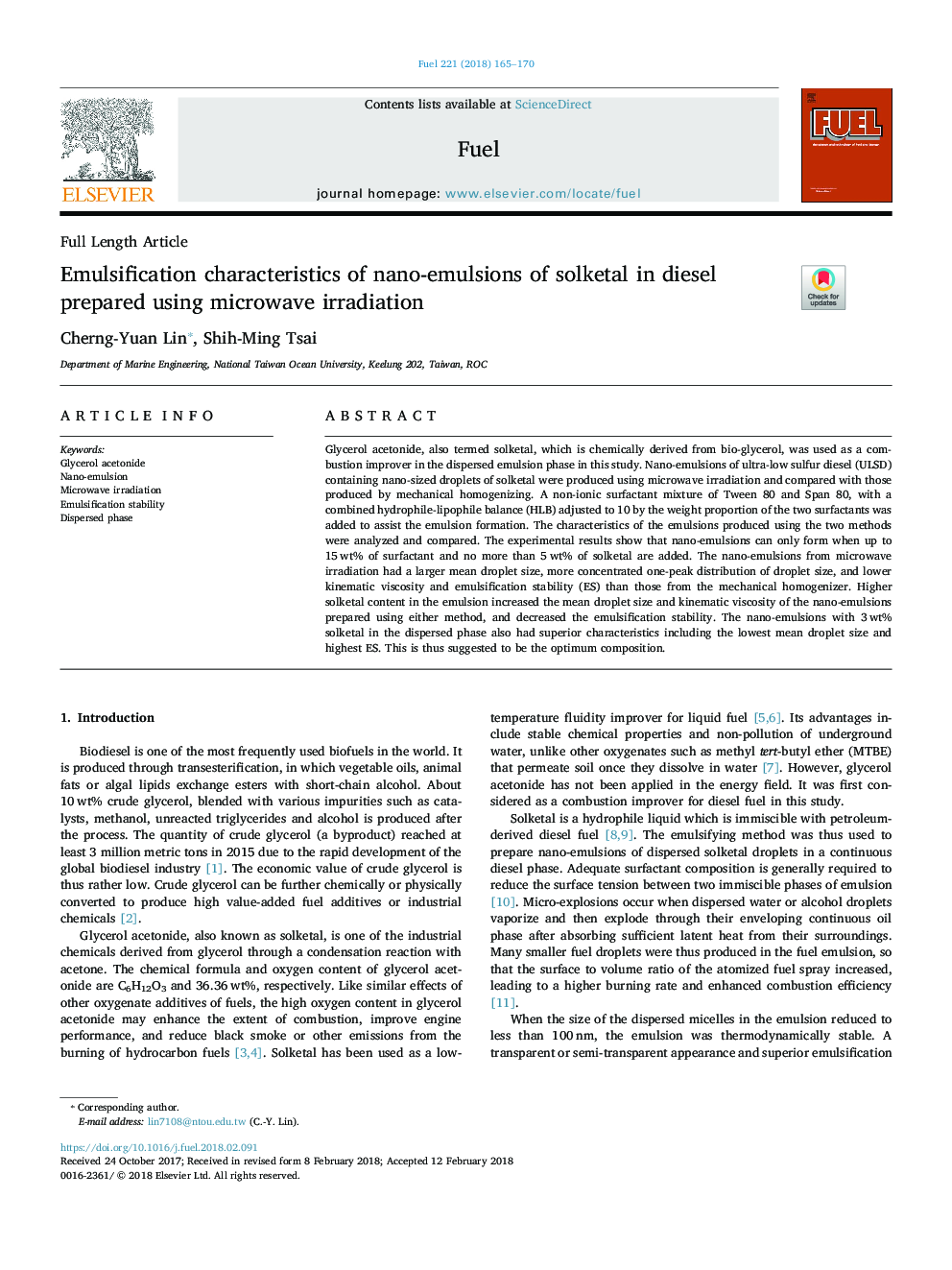| Article ID | Journal | Published Year | Pages | File Type |
|---|---|---|---|---|
| 6631528 | Fuel | 2018 | 6 Pages |
Abstract
Glycerol acetonide, also termed solketal, which is chemically derived from bio-glycerol, was used as a combustion improver in the dispersed emulsion phase in this study. Nano-emulsions of ultra-low sulfur diesel (ULSD) containing nano-sized droplets of solketal were produced using microwave irradiation and compared with those produced by mechanical homogenizing. A non-ionic surfactant mixture of Tween 80 and Span 80, with a combined hydrophile-lipophile balance (HLB) adjusted to 10 by the weight proportion of the two surfactants was added to assist the emulsion formation. The characteristics of the emulsions produced using the two methods were analyzed and compared. The experimental results show that nano-emulsions can only form when up to 15â¯wt% of surfactant and no more than 5â¯wt% of solketal are added. The nano-emulsions from microwave irradiation had a larger mean droplet size, more concentrated one-peak distribution of droplet size, and lower kinematic viscosity and emulsification stability (ES) than those from the mechanical homogenizer. Higher solketal content in the emulsion increased the mean droplet size and kinematic viscosity of the nano-emulsions prepared using either method, and decreased the emulsification stability. The nano-emulsions with 3â¯wt% solketal in the dispersed phase also had superior characteristics including the lowest mean droplet size and highest ES. This is thus suggested to be the optimum composition.
Related Topics
Physical Sciences and Engineering
Chemical Engineering
Chemical Engineering (General)
Authors
Cherng-Yuan Lin, Shih-Ming Tsai,
